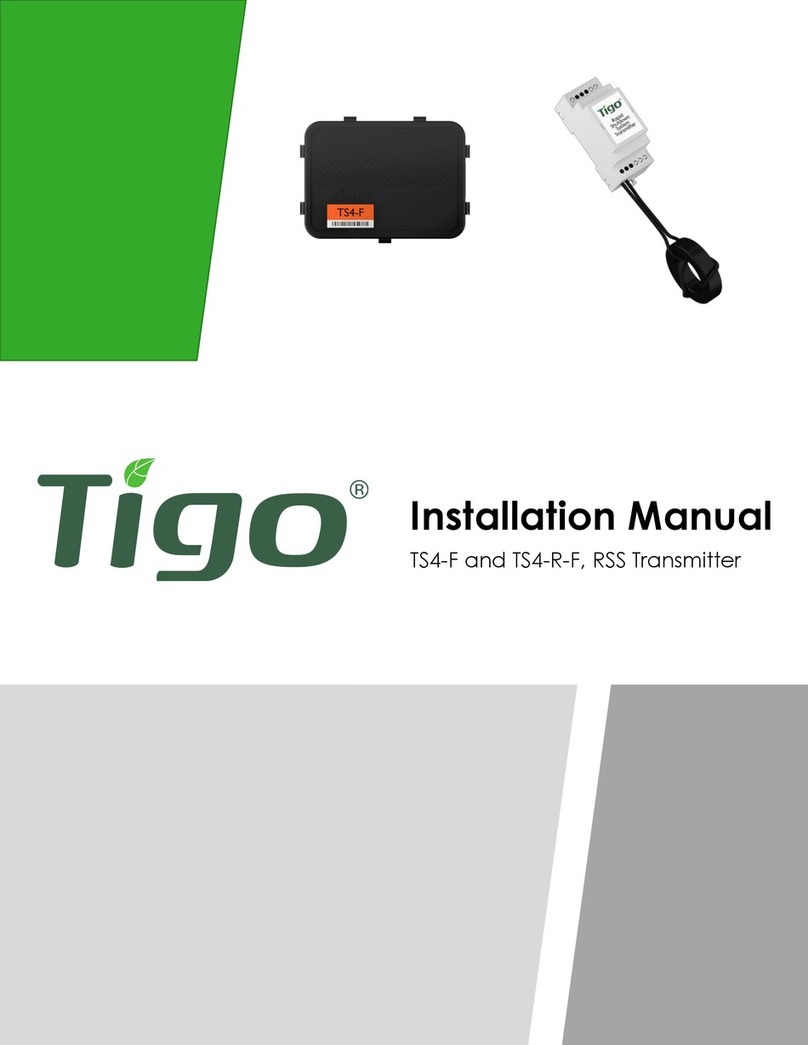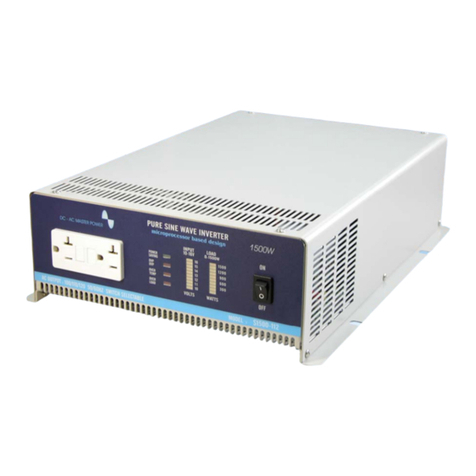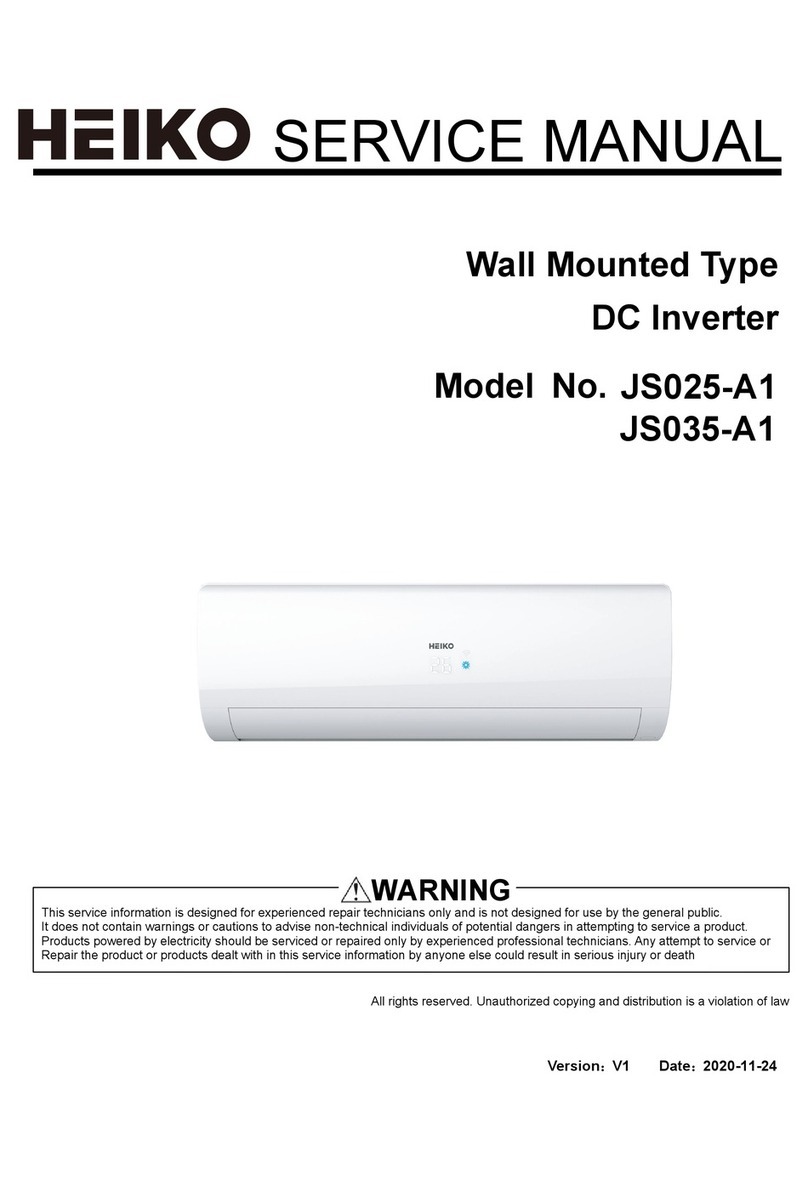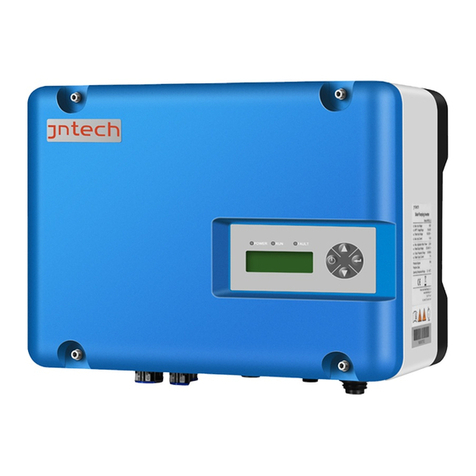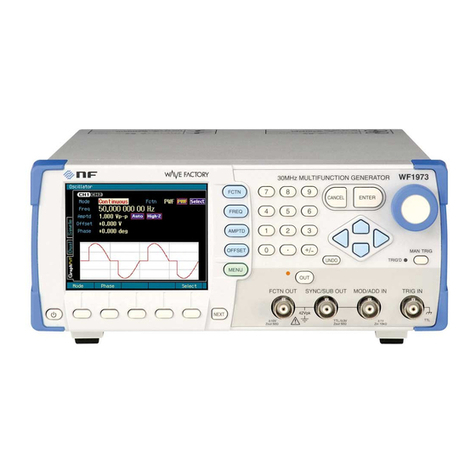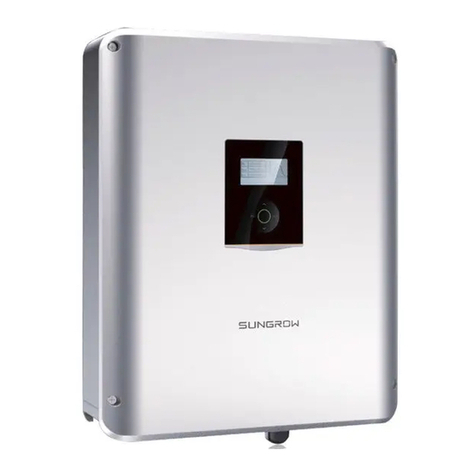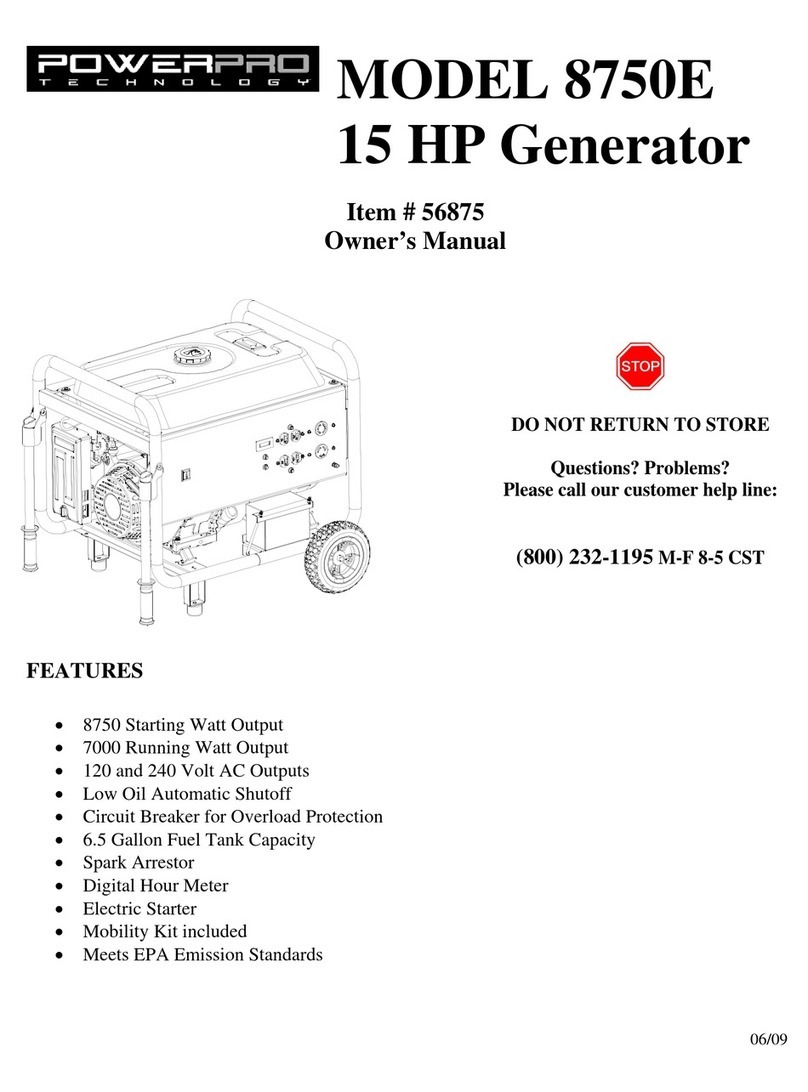Enchlor GASBLASTER User manual

www.enchlor.com
GASBLASTER
OzoneGenerator
UserGuide

Table of Contents
Warranty 1
Safety 2
Ozone Generator Chassis Layout 3
Standard LSX Series Control Panel Layout 4
Standard LSX Control Panel Description 5
Generator Installation 6
Start-up 7
On Board Sensors 8
Shut Down 9
Technical Support 10
Application and Sizing 11-15
Application Overview 16-20
Troubleshooting Guide 21-24
Optional Gas Detection 25-30
Discharge Fan 32
Air Compressor 33
Tubing and Clamps 34
Flow Diagragm 35
Wiring 36
Dimensions 37
General Layout Drawing 38
Enclosure Heater 39
Wall Mounting Brackets 40
Air Filtration System 41
Generator 42
Discharge Check Valve 43
Ozone Gas Sensor 44

Gasblaster LSX O&M Sept 2009.doc 1 Enchlor Inc.
Warranty
All Enchlor products are protected by a one year limited warranty.
This warranty covers all parts and labor for all Enchlor products used under normal operating
conditions and procedures as described in the User Guide supplied with each product. Enchlorʼs
obligation under this warranty is limited to the repair, replacement, or return/refund of the unit or
component determined to be defective.
Any misuse, improper operation or installation of any Enchlor parts or equipment, as determined
by Enchlor, will void any and all warranty claims to the primary component as well as all
supporting components.
Any repair, modifications, or service performed by someone other than a Enchlor authorized
technician will void any and all warranty claims to the primary component as well as all
supporting components.
Warranty of equipment and / or accessories from outside sources, purchased by Enchlor and
incorporated into Enchlor products, is subject to that manufactures standard warranty.
Enchlor shall not be liable to the purchaser or others for loss of use of any product or for other
special, indirect, incidental or consequential damages.
The Enchlor warranty policy does not cover shipping and handling charges incurred during the
warranty claim process.
The warranty will be voided by the following:
•Allowing water to enter the ozone generator.
•Supplying feed gas that is not clean and free of oil or other contaminates.
•Supplying feed gas that is not dry to -60°F minimum dew point (excluding generators that
have onboard oxygen concentrators). Ref. ISO 8573-1 Quality Class 1.
•Connecting an improper power source to the unit that does not match the incoming power
requirements as outlined in the User Guide.
•Locating any product in an environment that is not well ventilated and protected.
Limits of Liability
Enchlor shall not be liable for any special, indirect, incidental or consequential damages that
result from the use or malfunction of any system, ozone generator and/or any of its components.
Enchlor equipment and components are sold for use in industrial and commercial applications
only.

Gasblaster LSX O&M Sept 2009.doc 2 Enchlor Inc.
Safety
Carefully review and familiarize yourself with the following important safety information statements
concerning Enchlor generators.
WARNING: Oxygen is a fire hazard. It is very dangerous and vigorously accelerates the
burning of combustible materials. To avoid fire and/or explosion, never use oil,
grease, cotton fibers or any other combustible material on or near the ozone or
oxygen generators. Smoking, heat, and open flame should be kept at a distance
of no less than 5 feet from any part of the system. It is STRONGLY
recommended that only individuals experienced in the safe handling of oxygen be
allowed to operate this equipment.
WARNING: OSHA exposure limit to ozone is 0.1 ppm for a period of 8 hours.
(Ref. OSHA Air Contaminants Standard, 29 CFR 1910.1000)
(EU Directives - 96/62/EC, 92/72/EC, 99/30/EC.)
WARNING: Ozone is a highly toxic oxidizer. Ozone has a distinctive odor, which is easily
recognized at very low concentrations. If this odor presents itself at any level,
disconnect the generator and contact your installer.
WARNING: High voltage and high capacitance is present in ozone generators. Only qualified
electricians should work on this equipment.

Gasblaster LSX O&M Sept 2009.doc 3 Enchlor Inc.
OzoneGeneratorChassisLayout
Reactor
Cell
High Output
Transformer
Air
Compressor
0-10 vdc or
4-20mA
control
(optional)
LSX
System
Rack

Gasblaster LSX O&M Sept 2009.doc 4 Enchlor Inc.
StandardLSXSeriesControlPanelLayout
Ozone Output
Adjustment
Knob
Feed Gas
Flowmeter
(SCFH)
High Voltage
and Ozone
Gas Caution
Notice
Gas Flow
Adjustment
Knob

Gasblaster LSX O&M Sept 2009.doc 5 Enchlor Inc.
StandardOEMControlPanelDescription
GasFlowMeterKnob: Controls the amount of oxygen or dry air feed gas that is fed through the ozone
production cells.
Ozone Output Indicator (GREEN Light): Verifies that the ozone modules are working and producing
ozone. (LOCATED ON SIDE OF TRANSFORMER)
Ozone Output Adjustment Knob: Controls ozone produced by the machine from 0% through 100% of
the certified maximum ozone production shown on the serial number and certification plaque.
On/Off Main Power Breaker Switch: Controls ALL incoming power to the ozone generator. Located on
outside of LSX enclosure

Gasblaster LSX O&M Sept 2009.doc 6 Enchlor Inc.
GeneratorInstallation
LocationRequirements
•Clean and dry-protected from direct rain and snow
•Well ventilated
•A 12” minimum free air space maintained on all sides of the ozone generator
•Stable cabinet or frame mount or similar placement
•Ambient temperature 32º F (0º C) to 100 ºF (43º C)
•A degree of protection from airborne water and dirt
ElectricalRequirements
•Dedicated 115/240 VAC - 15-amp outlet on a circuit with disconnect a maximum 50 feet away
and in the line of sight of the ozone generatorʼs operator panel.
Note: Incoming power must be free of any power surges or spikes.
•Do not add or remove length to the incoming power cord.
•The generator must be grounded to an external ground source supplied with the incoming
power wiring.
WARNING: No liquid water should be allowed to enter the ozone generator. The compressed
air inlet water load saturated at 120ºF at 30 PSIG is acceptable (.0216 lb
water/lb dry air).
WARNING: No oil in vapor or aerosol form greater then 0.008 ppm should be allowed to
enter the ozone generator. Air quality should be equivalent to the output of an
oil-less compressor (no hydrocarbons).
•The feed gas connection is via the 3/8” polyethylene tube leading to the lower port of the
Feed Gas Flowmeter
•Ozone out is from the 3/8” tube coming from the outlet of the ozone reactor cell.
•It is recommended that an anti-siphon loop or other back flow protection be used to prevent
water from backing up into the ozone production cells. Damage incurred from water is not
covered by the manufacturerʼs warranty.

Gasblaster LSX O&M Sept 2009.doc 7
StartUp
1. Make sure the amber On/Off Main Power Breaker Switch is in the OFF position.
2. Power down or close off the external incoming oxygen or dry air gas source (if equipped).
WARNING: No liquid water should be allowed to enter the ozone generator.
WARNING: No oil in vapor or aerosol form greater then 0.008 ppm should be allowed to
enter the ozone generator (no hydrocarbons).
3. Completely open any back pressure control valves that may be installed in the ozone
output line.
4. Set the Ozone Output Adjustment Knob to 0%.
5. Turn the On/Off Main Power Breaker Switch to the ON position.
6. Set the Gas Flow Adjustment Knob so that the Gas Flowmeter indicates a minimum of (15
SCFH – LSX-100) (20 SCFH – LSX-200) .
7. To control the amount of ozone production, rotate the Ozone Output Adjustment Knob
clockwise. The signal demand can be seen on the Reference Meter and the activation of
the ozone generator cells will be indicated by the Ozone Output Indicator Light located on
the transformer.
Supply Air Specifications: The quality of the air supplied to the ozone generator is critical to its proper
operation. Damage incurred from improper feed gas quality is not covered by the manufacturerʼs
warranty. Outside air enters the system through the air intake hood. A filter is installed in the hood
to prevent most contaminents from entering. It is critical that this filter remain inplace and be
cleaned on a regular basis. Water MUST be prevented from entering the air intake hood. The
system must be located so that during rain or snow conditions, the air intake hood is not subject to
rainfall, standing water, snow etc.

Gasblaster LSX O&M Sept 2009.doc 8
OnBoardSensors
High temperature sensor: If the temperature of the transformer exceeds 160°F, the transformer will
shut down in order to protect the electronic components from excessive heat. After the
temperature of the cell drops below the set point, the unit will re-engage.

Gasblaster LSX O&M Sept 2009.doc 9 Enchlor Inc.
ShutDown
1. Rotate the Ozone Output Adjustment Knob counterclockwise to 0%, wait until the
Reference Meter shows less then 2 Volts DC, and the red Ozone Output Indicator Light is
off.
2. Allow two minutes to purge ozone out of system.
3. Turn the amber On/Off Main Power Breaker Switch to the OFF position.
Note: In a shut down mode, air or oxygen in a receiver tank may expand and contract in the
tank. This will cause water to be pulled over the anti-siphon loop. During shut down,
open the receiver tank to atmosphere or disconnect the ozone generator from the air
or oxygen line.

Enchlor Inc., Box 99, 130 West Main Street, Silverdale, PA 18962
Phone: 215-453-4533 Fax: 215-453-1101 www.enchlor.com
TechnicalSupport
Technical Support and Parts
Technical support is available by telephone directly from Enchlor at
(215) 453-2533. When calling, please have the following information available:
•Model number
•Serial number
•Brief description of installation
•Confirm line voltage
•Confirm inlet air conditions
•Confirm output connections
Online Support
Technical Online Support is available through the Enchlor web site at www.enchlor.com and
includes topics such as:
•Troubleshooting guides
•Product specifications
Field Services
Complete field services are also available. Please contact Enchlor Services for prices and
scheduling. Enchlor will confirm all field service requests in writing prior to scheduling.

Enchlor Inc., Box 99, 130 West Main Street, Silverdale, PA 18962
Phone: 215-453-4533 Fax: 215-453-1101 www.enchlor.com
GASBLASTER APPLICATION WORKSHEET
This sheet is designed to help gather the information required to assist in the selection of the correct odor control device to neutralize the
odor challenge.
NOTE: Wastewater odors can be composed of numerous gases and concentrations. For the purpose of sizing, H2S (hydrogen sulfide)
concentration will be used as the indicator gas to determine odor level. If another gas and concentration are known, and desired to be
used for sizing, please consult the factory.
Date: ______________ Job Reference: ______________________________
Salesperson: ___________________Organization:______________________
Customer: ______________________________________________________
Contact: ________________________________________________________
Customer Address: _______________________________________________
City: __________________________ State: __________ Zip: _____________
Phone: ________________________,
Fax:_____________________________
Customer E-mail: _________________________________________________
Application type: __________________________________________________
Site Address: _____________________________________________________
City: __________________________ State: __________ Zip: ______________

Enchlor Inc., Box 99, 130 West Main Street, Silverdale, PA 18962
Phone: 215-453-4533 Fax: 215-453-1101 www.enchlor.com
GASBLASTER SIZING
Sizing formula is an estimating guide only. Many factors will affect the actual sizing required. These factors include: volume of lift station
chamber, contents of wastewater, cycle timing of station, outside peak temperature etc.
Hydrogen Sulfide concentration in vent stream: _______ ppm
Average inflow of sewage at above concentration: _______ gpm
FLOW: average station flow rate generating normal H2S levels (GPM)
H2S: peak VENT level of H2S monitored in normal operating conditions and temperatures (PPM)
Flow (gpm) x H2S (in ppm) = EOR (Estimated Oxidizer Required)
_________ (gpm) x _________ (ppm) x 0.13 = ____________ (EOR)
Select GasBlaster model corresponding to GBR number. It is recommended that the units GBR (Gas Blaster Rating) should always
exceed the EOR value. If a unit cannot be found, please consult the factory for specialized unit configuration.
EXAMPLE 1:
A small lift station with a flow rate of 250,000gpd has a vent reading that peaks at 40ppm of H2S. First, convert the GPD to GPM = 173.6
173.6gpm X 40ppm X 0.13 = 902.72 EOR
A selection of a model LSX-100 or LSX-3001 would be suggested as the GBR rating for each of these models is 3000 GBR
EXAMPLE 2:
A large lift station has a flow rate of 5mgd and has a peak vent H2S reading of 40ppm
First, convert the flow to GPM = 6944gpm
3472gpm X 40ppm X 0.13 = 18,054 GBR
A selection of a single LSX-3006 model with a GBR rating of 19,200 would be acceptable –OR – a selection of two model LSX-3003 with
a GBR rating of 9600 each.

Gasblaster LSX O&M Sept 2009.doc 13 Enchlor Inc.
MODEL
#
# of
gm/h
PPD
OZONE
PPM
OZONE**
PPM
OZONE
Supply
Gas
GAS
BLASTER
generators
ozone
air feed
200CFM
fan
400CFM
fan
Feed
SCFH
RATING*
(GBR)
EPRO-4
4 plates
4
0.22
N/A
N/A
N/A
N/A
EPRO-8
8 plates
8
0.44
N/A
N/A
N/A
N/A
LSX-100
1
10
0.55
16
7.5
10
3200
LSX-200
2
20
1.10
32
15.0
20
6400
LSX-
3001
1
10
0.55
16
7.5
10
3200
LSX-
3002
2
20
1.10
32
15.0
20
6400
LSX-
3003
3
30
1.66
48
22.5
30
9600
LSX-
3004
4
40
2.21
64
30.0
40
12800
LSX-
3005
5
50
2.76
80
37.5
50
16000
LSX-
3006
6
60
3.31
96
45.0
60
19200
*all ratings calculated with 200cfm discharge fan rating and dry air supply
(standard)
**all PPM Ozone ratings are calculated with a 20% effeciency reduction

Enchlor Inc., Box 99, 130 West Main Street, Silverdale, PA 18962
Phone: 215-453-4533 Fax: 215-453-1101 www.enchlor.com
CONVERSION - GPM TO CFM TO MGPD
0
500
1000
1500
2000
2500
3000
3500
0 23 46 70 93 116 139 162 186 209 232 255 279 302 325 348 371 395 418
CUBIC FEET PER MINUTE
GALLONS PER MINUTE
0
0.5
1
1.5
2
2.5
3
3.5
4
4.5
5
MILLION GALLONS PER DAY

Enchlor Inc., Box 99, 130 West Main Street, Silverdale, PA 18962
Phone: 215-453-4533 Fax: 215-453-1101 www.enchlor.com
REFERENCE
OZONE REQUIRED (gm/h) for PRESCRIBED DOSAGE in PPM/Volume
AIR FLOW CFM

APPLICATION / INSTALLATION OVERVIEW
The treatment and transfer of wastewater produces odor emissions what are sometimes
disturbing for the population living nearby a waste treatment facility or pumping station. The
main sources of bad odors are sludge and its treatment as well as the collecting and primary
treatment stages. The measurement of odors and the tolerance threshold of bad smells are
subjective and no legislation about it has been made. The two main sources of nauseous
odors are H2S and NH3.
To aid in the removal of these odors, Enchlor Inc. has developed the Gasblaster Series of
Ozone generators specifically designed to remove these odors. The Gasblaster prevents
these odors from escaping the treatment or transfer chamber by injecting high concentrations
of ozone into the air above the wastewater providing destruction of the offending gaseous
odors and reducing them to simple compounds that simply returns to the wastewater for
disinfection.
Direct Ozonation
Two methods are available to control the odors related to wastewater facilities and treatment,
the simplest one is the direct ozonation. This method is suitable for small plants and can be
relatively inexpensive. The alternative is washing the air with ozonized water. The method of
elimination of odors by direct ozonation consists in putting in contact ozone molecules (O3)
and nauseous molecules (H2S, NH3 and CH4). Those last compounds are mainly reducers
whereas ozone is a strong oxidant, consequently they react so that the ozone molecule looses
an oxygen atom and an oxygen molecule (O2) is released. At the same time the addition of an
oxygen atom to the odorous compound provokes it to break up into smaller compounds or to
transform into a stable compound. Those new molecules are not odorous.
Concerning hydrogen sulphide two ways of reaction are possible:
H2S + O3 = H2O + S + O2 (principal reaction)
H2S + O3 = H2O + SO2 (secondary reaction)
Obviously the principal reaction is environmentally more interesting since the secondary
reaction releases sulphur dioxide (SO2) that belongs to the family of sulphur oxide gases
(SOx). SO2 dissolves in water vapor to form acid, and interacts with other gases and particles
in the air to form sulphates and other products that can be harmful to people and their
environment.
Ammonia and methane also react with ozone and gives stable products (carbon dioxide and
nitrogen gas):
CH4 +4O3 = CO2 + 4H2O + O2
4NH3 + 3O3 = N2 + 3H2O + 3O2

Enchlor Inc., Box 99, 130 West Main Street, Silverdale, PA 18962
Phone: 215-453-4533 Fax: 215-453-1101 www.enchlor.com
These reactions gives water (H2O), oxygen (O2), carbon dioxide (CO2) and nitrogen (N2).
There are all stable molecules and do not have harmful or nauseous effects.
Five parameters have to be taken into account in order to design a proper ozonation process:
1. Concentration of the nauseous molecules
2. Temperature and moisture
3. Type of contact between the gas and the ozone
4. Contact time between the gas and the ozone
5. Volume to be treated and flow of air
Ozonation can as well remove totally the odors as reduce them at a suitable level. Generally if
the ratio ozone molecule by hydrogen sulphide molecule (O3: H2S) is comprised between 1.5
and 2, it is enough to obtain a sufficient result. Nevertheless a ratio of 2 permits to prevent
from peaks.
Higher quantity of ozone can be used in case of difficult conditions (such as high temperature
and high moisture content). It can also be required for highly concentrated odorous
compounds, especially when treating the sludge.
The installation of the ozone generator is also important. The ozone reacts better when
injected into a warm and wet medium, but its production by the generator is the best when it
occurs in a dry and fresh place. Then the generator uses to be installed outside or a least not
at the same place where the reaction happens.
As mentioned before the contact surface between the ozone and the nauseous gas is critical
for the process. This is reinforced by the fact that the concentrations of hydrogen sulphide are
only around a few ppm.
Safety Issues of high Hydrogen Sulfide Levels
Hydrogen sulfide levels are an indication of the aggressiveness of the atmosphere. This
situation greatly increases the rate at which corrosion occurs inside the wet well. Severe
corrosion damage can be expected at stations with high Hydrogen sulfide levels and without
effective protection these stations can quickly be considered to be structurally compromised to
the point where repairs are required or operator safety is compromised. This corrosion
produces conditions, which are considered unsafe for manned entry into a wet well. These
conditions included failed access ladders, corroded/disintegrated handrails, access platforms
with missing sections of grating etc.
The Gasblaster series of control units provides valuable benefits in both odor control and a
reduction in corrosion to facility equipment from the reduction and removal of H2S. For
additional information and system details, please contact your local Enchlor Inc.
representative.

Enchlor Inc., Box 99, 130 West Main Street, Silverdale, PA 18962
Phone: 215-453-4533 Fax: 215-453-1101 www.enchlor.com
General Ozone Information
Ozone (O3) is a colorless gas with a distinct, pungent odor. It is a molecule made up of 3
atoms of oxygen. Interestingly ozone occurs quite readily in nature, most often as a result of
lightning strikes that occur during thunderstorms.
In fact that "fresh, clean, spring rain " smell that we notice after a storm most often results
from natures creation of ozone. Ozone generators create ozone in your home or business
ensuring the same clean air as found in nature.
Ozone is one of the most powerful disinfectants in the world, second only to Fluorine. It is
three thousand times more potent than chlorine in destroying germs, bacteria, and viruses.
Benefits of Ozone Cleaning
It doesn't have as strong, or over–powering odor like Fluorine or Chlorine, yet it is so powerful,
it actually kills those odors. Once generated, ozone is quite unstable, one of the three oxygen
atoms eagerly splits off the molecule and attaches itself to any particle or pollutant with which
it comes in contact. That single oxygen atom from the ozone air purifier proceeds to "oxidize"
that particle. As a result, the particle will no longer be toxic, and will no longer be able to
reproduce, if it is biological.
In other words, the toxic particle becomes completely harmless once ozone does its job.
When the single oxygen (O1) molecule oxidizes the particle, it too is destroyed.
Ozone cleaning leaves behind the O2, from which it split away, or pure and clean oxygen.
EPA / OSHA Information
The National Institute of Occupational Safety and Health (NIOSH) recommends an upper limit
of 0.10 ppm for occupied spaces not to be exceeded at any time.
EPAʼs National Ambient Air Quality Standard for ozone is a maximum 8-hour average outdoor
concentration of 0.08 ppm.
If an ozone air purifier is going to be running while people are present, the EPA recommends
the proper settings should be selected so that the ozone level is less than 0.08 ppm.
NOTE: The Gasblaster systems are designed for use in NON-OCCUPIED spaces
only. If access to the lift station/wet-well chamber in required, the system
must be turned-off and the chamber ventilated prior to entering.
Table of contents
Popular Inverter manuals by other brands
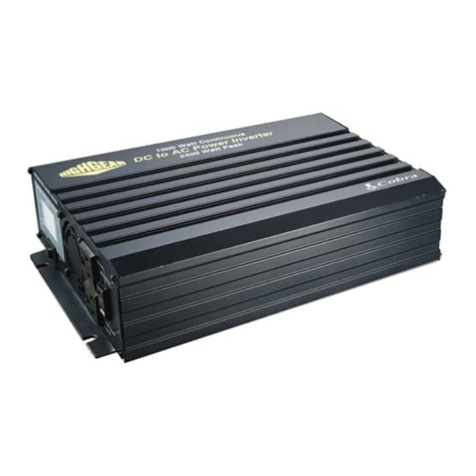
Cobra
Cobra High Gear HG-PI1000 operating instructions
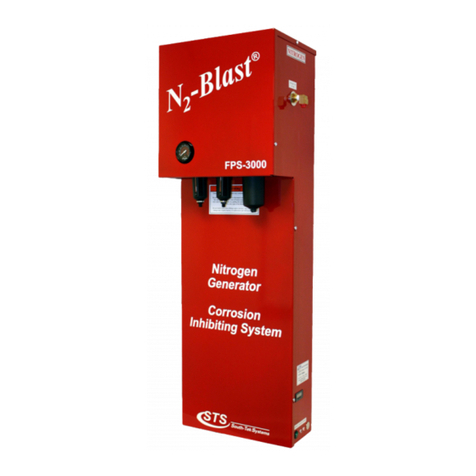
South-Tek Systems
South-Tek Systems N2Blast FPS-1750 manual
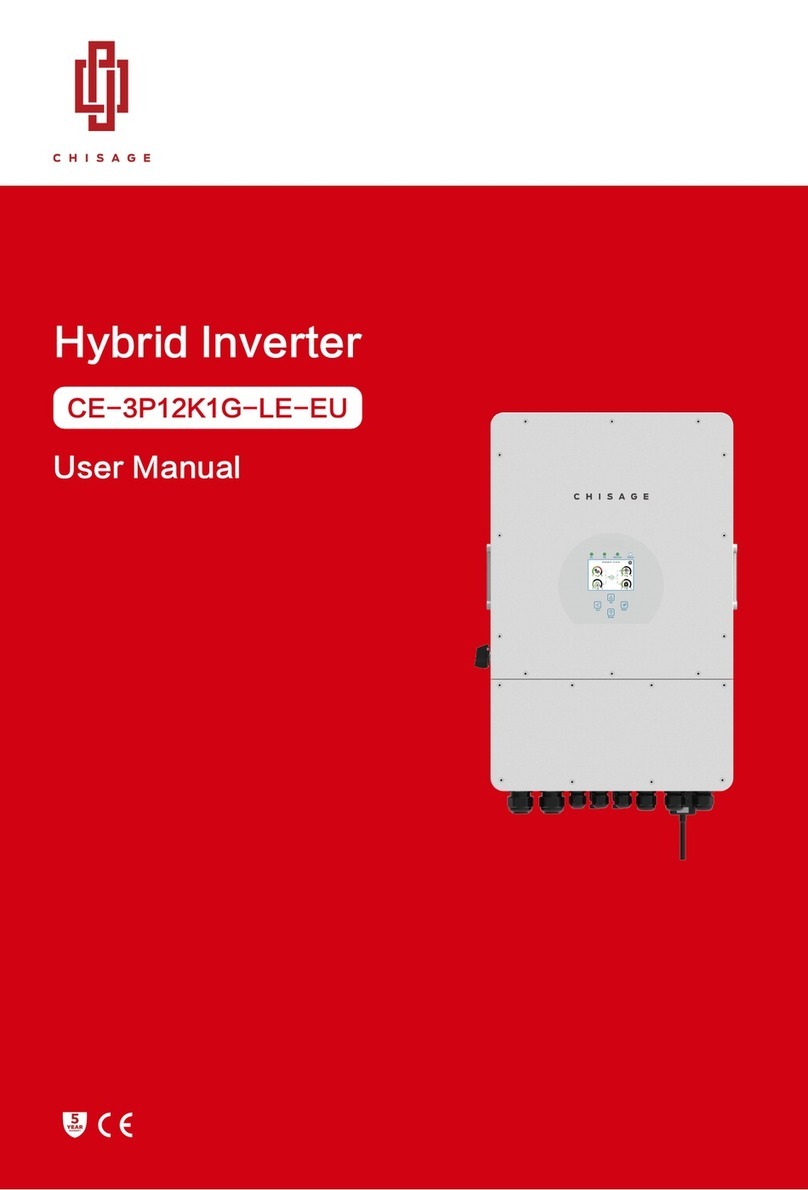
CHISAGE
CHISAGE CE-3P12K1G-LE-EU user manual
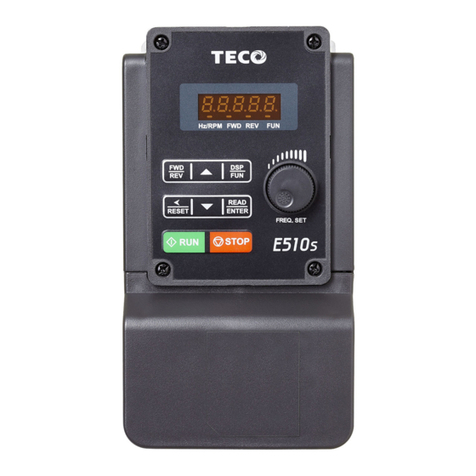
TECO
TECO E510s Series Quick Setting-up Manual
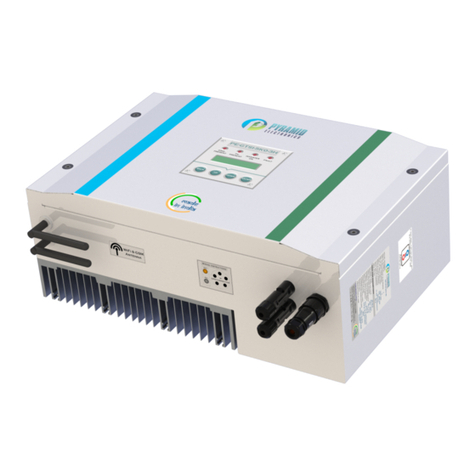
Pyramid
Pyramid 5 KW 3 Phase User & installation manual
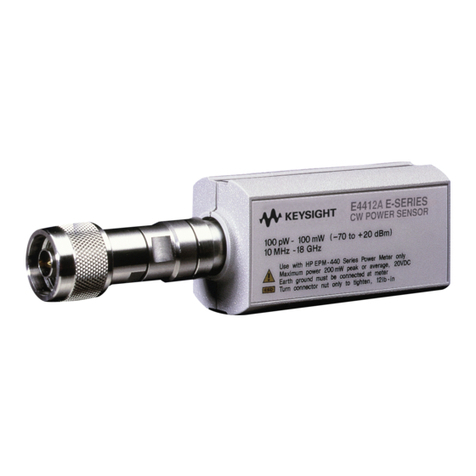
Agilent Technologies
Agilent Technologies E4412A Operating and service guide
